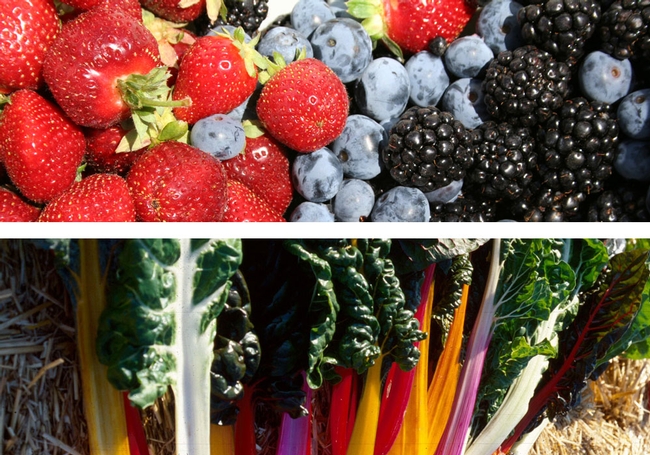Posts Tagged: fruit
It's Tough Being a Bee During the Springlike Rains
It's tough being a bee--especially when you have work to do and the rain won't let you out of your hive. But when there's a sun break, it's...
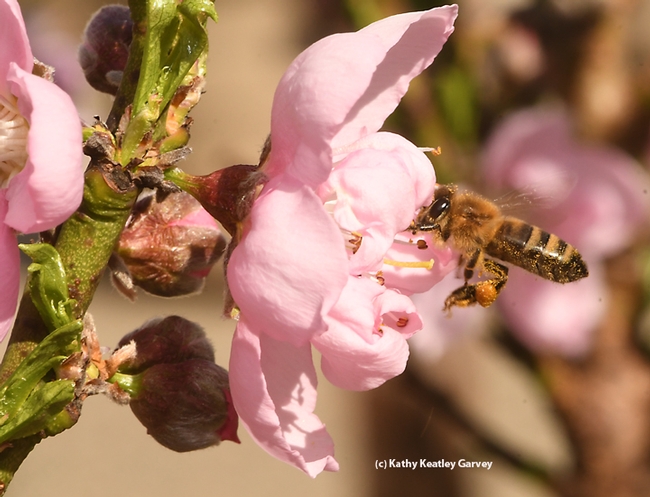
A honey bee pollinating a nectarine blossom in Vacaville, Calif. (Photo by Kathy Keatley Garvey)
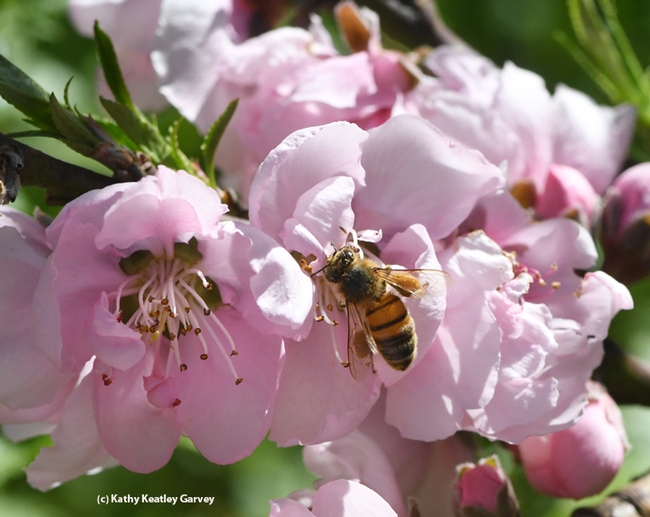
A foraging honey bee takes a liking to a nectarine blossom. (Photo by Kathy Keatley Garvey)
The Medfly 'Through the Decades': Tune in to Hear Professor Carey on July 3
Remember when scientists first detected the Mediterranean fruit fly in California? It was the early 1980s. The invasive insect, better known as the...

Distinguished Professor James R. Carey is known for his outstanding research, outreach and advocacy program involving invasion biology, specifically the Mediterranean Fruit Fly (medfly) and the Light Brown Apple Moth (LBAM). (Photo by Kathy Keatley Garvey)
USDA's nutrition advice doesn't align with spending
According to the USDA's dietary recommendations - which are represented in the MyPlate infographic - half the food Americans eat should be fruit and vegetables. However, the same agency allocates under one-half of 1 percent of agency funds to specialty crops like fruits and vegetables, reported Helene Bottemiller Evich in Politico.
For the story, Evich spoke to Glenda Humiston, vice president of UC Agriculture and Natural Resources (UC ANR), the research and outreach arm of the University of California. UC ANR extends science-based agricultural production and nutrition information to California farmers and communities. Humiston said California agricultural industry leaders have made it clear that they don't want traditional subsidies, like price supports.
"They want help with the infrastructure to do their jobs better," she said, including more funding for research labs and data collection that can help industry solve problems.
It isn't clear whether subsidies would reduce the cost of fruits and vegetables, nor does the potential of lower-cost healthy food ensure that people will eat it, the article said.
Many consumers also lack the time or the skills to prepare and cook their perishables. And some don't care for the flavor of healthful produce like kale, kohlrabi and rapini, to name a few.
The top fruits and vegetables consumed by Americans are potatoes (french fries) and tomatoes (primarily driven by ketchup). Only 14 percent of Americans consume 1.5 to 2 fruits and veggies per day, according to State of the Plate, a 2015 study on Americas' consumption of fruit and vegetables. (See below.) The USDA's dietary guidelines recommend 9 to 13 servings of fruit and veggies per day.
State of the Plate, a 2015 Study on America's Consumption of Fruit and Vegetables by the Produce for Better Health Foundation.
Why Circadian Timing Is Everything
(Editor's Note: Joanna Chiu will be featured on Capital Public Radio's "Insight with Beth Ruyak" from 9 to 10 a.m., Tuesday, March 7. See...
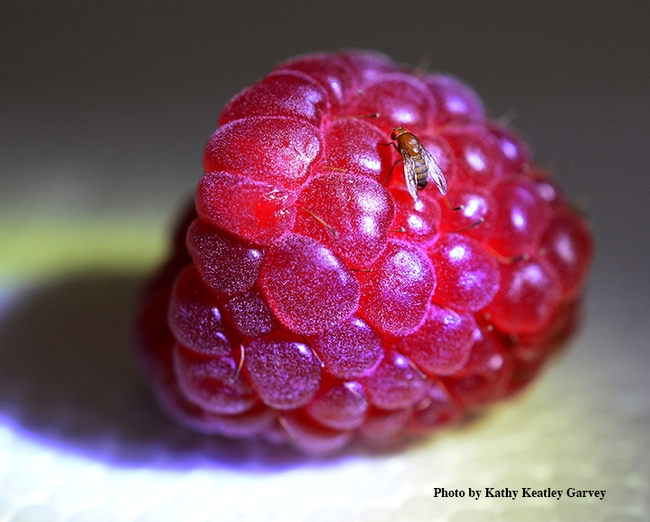
This is a fruit fly, the spotted wing drosophia (Drosophila suzukii), that molecular geneticist Joanna Chiu of UC Davis is studying in her lab in Storer Hall. (Photo by Kathy Keatley Garvey)
Of Medflies and Light Brown Apple Moths
Congratulations to James R. Carey, distinguished professor of entomology at the UC Davis Department of Entomology and Nematology for his public...
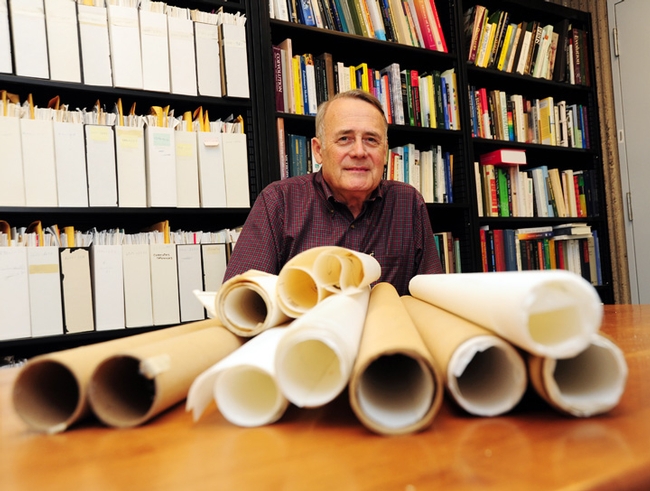
UC Davis Distinguished Professor James R. Carey with some of the maps he used in his research. (Photo by Kathy Keatley Garvey)



